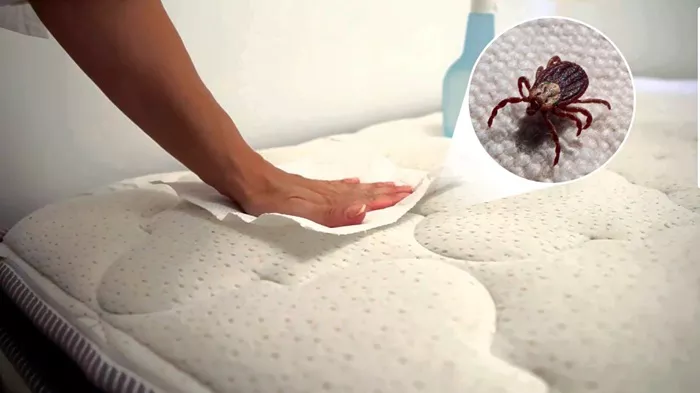Dust mites are microscopic creatures that thrive in warm, humid environments and are commonly found in household dust. Beds, with their fabric and fibers, provide an ideal environment for these pests, which feed on human skin flakes. The presence of dust mites can trigger allergies and respiratory problems, making it essential to take proactive measures to minimize their presence in bedding. This article explores effective strategies to prevent dust mites from colonizing your bed, ensuring a healthier sleep environment.
What Are Dust Mites and Why Are They a Problem?
Dust mites are tiny arachnids not visible to the naked eye, measuring only about a quarter to a third of a millimeter long. They reside primarily in bedding, carpets, and upholstered furniture. Their waste products can cause allergic reactions and aggravate asthma in sensitive individuals. Common symptoms include sneezing, runny nose, itchy eyes, and in severe cases, asthma attacks. Understanding the health risks associated with dust mites is crucial for recognizing the importance of controlling their population in your home.
Optimal Conditions for Dust Mites
Dust mites flourish in environments with high humidity (above 50%) and moderate temperatures (68 to 77 degrees Fahrenheit). They are less active in extremely hot or cold conditions. Therefore, regulating the temperature and humidity in your bedroom is a critical first step in controlling dust mite populations.
Effective Strategies to Control Dust Mites in Your Bed
1. Maintain a Clean and Dry Environment
Reducing Humidity:
Use a dehumidifier to maintain indoor humidity levels below 50%. This creates an unfavorable environment for dust mites, as they rely on moisture in the air to survive.
Ensuring Adequate Ventilation:
Keep your bedroom well-ventilated to reduce moisture levels. Regular air exchange helps prevent the buildup of humidity and decreases the likelihood of dust mite survival.
2. Regular Bedding Maintenance
Wash Bedding Regularly:
Wash all bedding in hot water (at least 130 degrees Fahrenheit) weekly. This temperature is critical to kill dust mites effectively. Include sheets, pillowcases, and blankets in your weekly laundry.
Use Dust Mite-Proof Covers:
Encase mattresses, pillows, and duvets in dust mite-proof covers. These covers are made from tightly woven fabric that prevents dust mites from entering or escaping.
3. Choosing the Right Bedding
Select Synthetic Materials:
Opt for synthetic fibers for pillows and duvets instead of natural materials like down feathers, which provide an ideal environment for dust mites.
Replace Bedding Regularly:
Consider replacing pillows and mattresses every few years. Over time, even with regular cleaning, these items can accumulate dust mites and their allergens.
4. Deep Cleaning Practices
Vacuum Regularly:
Use a vacuum cleaner equipped with a HEPA filter to clean your bedroom, including the bed surface, weekly. This type of filter can trap small particles such as dust mite allergens, preventing them from being redistributed in the air.
Steam Clean:
Occasionally, steam clean your mattress to kill any dust mites that survive regular washing. Steam cleaning uses high heat and moisture, which penetrate deep into the fibers of the mattress, effectively eliminating dust mites.
5. Lifestyle Adjustments
Minimize Fabric Surfaces:
Reduce the number of fabric surfaces in your bedroom, such as heavy drapes, plush carpets, and upholstered furniture, as they are potential habitats for dust mites.
Avoid Bedding Clutter:
Keep stuffed animals, decorative pillows, and other non-essential fabric items off the bed. These items can harbor dust mites and are often overlooked during regular cleaning.
6. Professional Intervention
Consider an Allergist Consultation:
If dust mite allergy symptoms persist despite taking preventive measures, consult an allergist. They can offer specific strategies and treatments, such as immunotherapy, to reduce sensitivity to dust mite allergens.
Hiring Professional Cleaners:
Occasionally, it may be beneficial to hire professional cleaners who specialize in allergen reduction. They can perform deep cleaning services that go beyond routine household cleaning.
Conclusion: A Comprehensive Approach to Dust Mite Prevention
Preventing dust mites from infesting your bed requires a comprehensive approach involving environmental control, regular maintenance, and lifestyle adjustments. By understanding the conditions that favor dust mite proliferation and implementing the strategies outlined above, you can significantly reduce their presence in your bed. This not only leads to a cleaner sleep environment but also improves overall health by minimizing exposure to allergens. Remember, consistent effort is key to keeping your bed free of dust mites and ensuring a healthier home.
[inline_related_posts title=”You Might Be Interested In” title_align=”left” style=”list” number=”6″ align=”none” ids=”8547,8543,8538″ by=”categories” orderby=”rand” order=”DESC” hide_thumb=”no” thumb_right=”no” views=”no” date=”yes” grid_columns=”2″ post_type=”” tax=””]
































